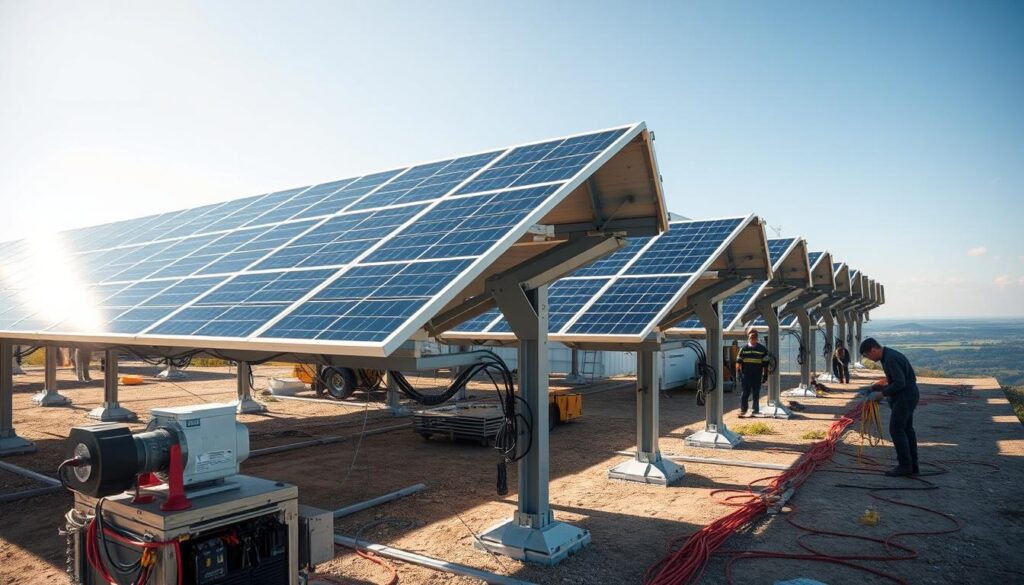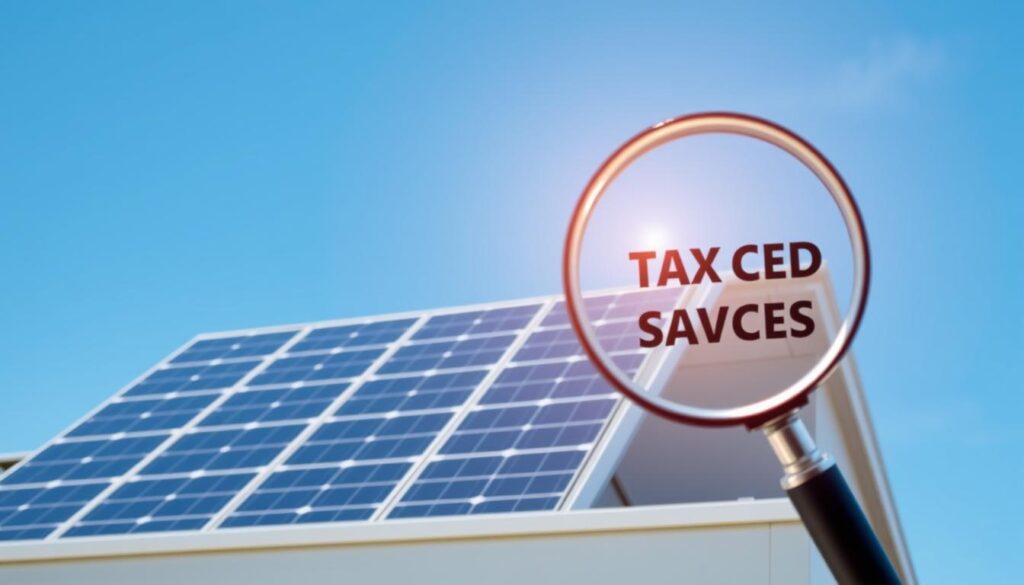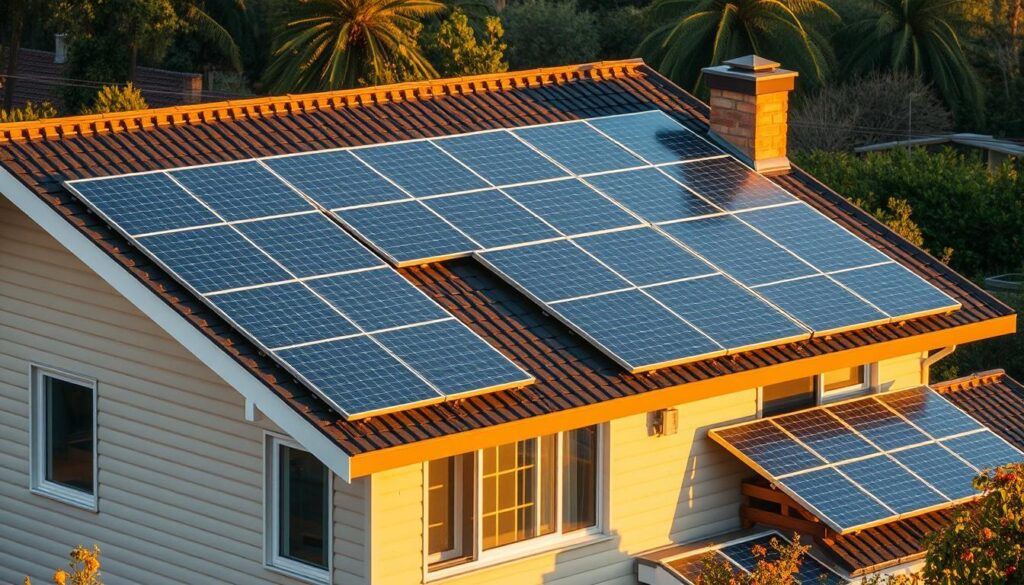Switching to renewable energy is becoming more accessible and affordable for homeowners across the U.S. Understanding the true investment involved in setting up a residential energy system is crucial for making informed decisions. From equipment to incentives, several factors influence the overall expense.
According to recent data, the average pre-incentive price for a typical system in 2025 is around $29,360. However, with the federal tax credit, this amount can drop significantly, making it a more attractive option. Evaluating both upfront and long-term savings is essential to gauge the financial benefits.
Recent trends show a steady decline in prices, thanks to advancements in technology and increased competition. Key elements like panel efficiency, system size, and installation fees play a significant role in determining the final expense. Additionally, policy incentives, such as the solar tax credit, can substantially reduce the net cost.
This guide will walk you through the essential details, helping you understand what to expect and how to maximize your savings. Whether you’re exploring options or ready to take the next step, this information will set the stage for a smoother journey.
Key Takeaways
- The average pre-incentive cost of a residential system is $29,360 in 2025.
- Federal tax credits can reduce the net cost to around $20,552.
- Equipment, system size, and installation fees are key cost factors.
- Policy incentives like the solar tax credit play a major role in affordability.
- Understanding both upfront and long-term savings is essential.
Understanding Residential Solar Systems
Residential energy systems are transforming how households manage their power needs. These setups typically include three main components: panels, inverters, and mounting hardware. Each plays a vital role in converting sunlight into usable electricity for your property.
Solar panels are the most visible part of the system. They capture sunlight and turn it into direct current (DC) electricity. Inverters then convert this DC power into alternating current (AC), which is what most appliances use. Mounting hardware ensures the panels are securely attached to your roof or ground.
The size of your system is crucial. An average U.S. property requires about 11 kW to cover its electricity usage. Larger homes or those with higher energy demands may need bigger setups. System size directly impacts both performance and price.
Quality and efficiency are also key factors. High-efficiency panels generate more power in less space, while durable equipment ensures long-term reliability. Investing in quality components can lead to greater savings over time.
Installation expenses vary depending on your location. State and local conditions, such as labor rates and permitting fees, can influence the final price. It’s important to work with a trusted installer to get accurate estimates tailored to your property.
By understanding these basics, you can make informed decisions about your energy investment. Whether you’re looking to reduce your utility bills or contribute to a cleaner environment, a well-designed system can meet your needs effectively.
Key Factors Affecting home solar installation cost
The price of setting up a renewable energy system depends on several critical factors. From the type of panels to the complexity of the setup, each element plays a role in determining the final expense. Understanding these factors can help you make informed decisions and maximize your savings.
Panel Selection is one of the most significant cost drivers. High-efficiency panels, though more expensive upfront, can generate more power in less space. This can lead to greater long-term savings. According to EnergySage, opting for premium panels can increase the initial price but reduce your electricity bill over time.
System Size also impacts the total expense. Larger setups require more panels and equipment, increasing the overall price. However, they can cover more of your energy needs, potentially reducing reliance on the grid. The average U.S. property requires about 11 kW to meet its electricity usage.

Additional Hardware, such as batteries, can add to the cost. While not always necessary, batteries store excess energy for use during cloudy days or power outages. This can enhance your system’s efficiency but comes at an additional price.
Purchasing Method is another key factor. Paying upfront with cash often results in the lowest overall expense. However, financing options like loans or leases can make the system more accessible, though they may include interest or fees.
Installer Pricing varies widely depending on location and experience. Labor rates, permitting fees, and local regulations can all influence the final price. It’s essential to obtain multiple quotes to ensure you’re getting a fair deal.
“The right combination of panels, system size, and financing can make renewable energy a smart investment for any homeowner.”
Here’s a breakdown of how these factors compare:
| Factor | Impact on Price | Long-Term Savings |
|---|---|---|
| Panel Efficiency | Higher upfront cost | Reduced electricity bills |
| System Size | Larger systems cost more | Greater energy coverage |
| Additional Hardware | Increases initial expense | Enhanced reliability |
| Purchasing Method | Cash is cheapest | Loans may add interest |
| Installer Pricing | Varies by location | Quality ensures durability |
By considering these factors, you can tailor your setup to fit your budget and energy needs. Whether you’re looking to reduce your utility bills or invest in a cleaner future, understanding these elements is the first step toward a smarter energy solution.
Regional Variations in Solar Installation Prices
Regional differences play a significant role in determining solar panel expenses. Across the U.S., the price of setting up a renewable energy system can vary widely depending on location. Factors like sunlight exposure, state policies, and local incentives all contribute to these variations.
For example, California’s average price can be as low as $14,476, thanks to abundant sunlight and strong incentive programs. In contrast, states like Alabama may see higher costs due to fewer local benefits. Understanding these differences can help you make a more informed decision.
State policies also influence pricing. Programs like net metering allow homeowners to sell excess energy back to the grid, reducing overall expenses. States with robust incentives, such as Arizona, often have lower net costs compared to those with limited programs.
Weather and roof orientation are additional factors. Areas with high sunlight exposure require fewer panels, lowering the initial investment. Meanwhile, regions with extreme weather may need more durable equipment, increasing the price.
“Local incentives and sunlight availability can make a significant difference in your solar investment.”
Installer competition also plays a role. In high-demand areas, competitive pricing can drive costs down. However, in regions with fewer options, prices may be higher due to limited availability.
Here’s a quick comparison of average costs in different states:
- California: $14,476
- Arizona: $16,200
- West Virginia: $19,500
By considering these regional factors, you can better estimate your expenses and maximize your savings. Whether you’re in a sunny state or one with fewer incentives, understanding local conditions is key to a successful investment.
Equipment, Labor, and Hidden Costs Breakdown
Understanding the full expense of a renewable energy setup involves more than just the panels. While panels are a visible component, they account for only about 12% of the total price. The remaining costs include equipment, labor, and hidden fees that can significantly impact your final bill.
Solar Equipment and Material Costs
Panels are just one piece of the puzzle. Other essential components include inverters, wiring, racking, and mounting hardware. Inverters, which convert energy for household use, can add $1,000 to $2,000 to the expense. Racking and wiring ensure the system is secure and functional, contributing another 10% to the total price.

Additional hardware, like batteries, can further increase costs. For example, a Tesla Powerwall or similar storage solution can add $7,000 to $14,000. While not always necessary, batteries enhance reliability by storing excess energy for later use.
Installation Labor and Permitting Fees
Labor is another significant factor, typically accounting for 25-35% of the total expense. Professional installers handle everything from mounting panels to connecting the system to your electrical grid. Labor costs vary by location, with complex roof designs adding 10-25% to the price.
Permitting and inspection fees are often overlooked but can add $500 to $2,000 to the bill. These costs ensure your system meets local regulations and safety standards. Transparency in quoting is crucial to avoid surprises.
“Understanding all the components of your renewable energy system helps you make informed decisions and avoid unexpected expenses.”
Here’s a quick breakdown of typical costs:
- Panels: 12% of total price
- Inverters and wiring: 25%
- Labor: 25-35%
- Permitting and inspections: 10%
By breaking down these costs, you can better understand your investment and ensure you’re getting the most value for your money. Whether you’re adding storage or upgrading your roof, knowing the details helps you plan effectively.
Financing Your Solar Investment: Loans, Leases, and Incentives
Financing your renewable energy setup can make the transition smoother and more affordable. Whether you pay upfront, take out a loan, or lease your system, each option has unique benefits and trade-offs. Understanding these choices helps you maximize savings and align with your budget.
Choosing the Right Payment Method
Paying cash upfront is often the most cost-effective option. It eliminates interest fees and allows you to claim the federal tax credit immediately. However, not everyone has the funds available for a lump sum payment.
Solar loans offer flexibility with fixed monthly payments over 5 to 25 years. While they may increase the total price by up to 47%, they let you start saving on your electricity bill right away. Zero-down options are particularly popular for homeowners looking to minimize upfront costs.
Leases and Power Purchase Agreements (PPAs) require little to no upfront payment. Instead, you pay a fixed monthly fee or per-kilowatt-hour rate. While these options reduce initial expenses, you won’t own the system or qualify for tax credits.
How Solar Loans and Leases Affect Your Budget
Loans and leases impact your finances differently. Loans typically offer long-term savings, with an average payback period of 7.1 years. Leases, on the other hand, provide immediate savings but limit your ability to benefit from incentives.
For example, a $100 monthly lease over 20 years totals $24,000. While this avoids upfront costs, it doesn’t build equity. In contrast, a loan might cost more initially but allows you to own the panels outright, increasing your property’s value.
Comparing Incentives and Rebates
Incentives like the federal tax credit can reduce your net expense by 30%. State rebates and local programs further enhance savings. These benefits are only available if you own your system, making loans or cash purchases more attractive.
For instance, a $20,000 setup could cost just $14,000 after applying the tax credit. Combining this with state incentives can lower the price even more. Always research local programs to maximize your savings.
“The right financing option can turn renewable energy into a smart, affordable investment for any homeowner.”
Here’s a quick comparison of financing methods:
- Cash Purchase: Lowest total cost, immediate tax credit eligibility.
- Solar Loans: Fixed payments, ownership benefits, slightly higher cost.
- Leases/PPAs: Low upfront cost, no ownership, limited incentives.
By evaluating your budget and goals, you can choose the best financing method for your needs. Whether you prioritize upfront savings or long-term benefits, there’s an option that fits your situation.
Maximizing Savings Through Tax Credits and Net Metering
Tax credits and net metering can make your energy investment more affordable than ever. These programs reduce upfront expenses and provide long-term financial benefits. By understanding how they work, you can maximize your savings and make the most of your renewable energy setup.
Federal Solar Tax Credit Benefits
The federal tax credit is one of the most significant incentives available. It allows you to deduct 30% of your system expenses from your federal taxes. For example, a $20,000 setup would qualify for a $6,000 credit, lowering your net expense to $14,000.
This credit applies to equipment, labor, and permitting fees. It’s available until 2032, after which it gradually decreases. If your credit exceeds your tax liability, the remaining amount can roll over to the next year.

“The federal tax credit can reduce your net expense by thousands, making renewable energy a smart investment.”
Understanding Net Metering and Local Incentives
Net metering credits you for excess energy your panels produce. This surplus power is fed back into the grid, reducing your electricity bill. For instance, if your system generates more energy than you use, you’ll receive credits to offset future bills.
Local and state incentives can further enhance savings. Programs like Arizona’s 25% rebate or New York’s $5,000 credit add to the financial benefits. Always research your area’s specific programs to maximize your returns.
Here’s a breakdown of potential savings over 25 years:
| Incentive | Savings |
|---|---|
| Federal Tax Credit | $6,000 |
| Net Metering Credits | $10,000+ |
| State Rebates | $1,000-$5,000 |
By combining these incentives, you can significantly lower your overall price. Timing is also crucial—taking advantage of current programs ensures you get the best deal. With the right approach, your renewable energy investment can pay off for decades.
Tailoring Your Solar System to Your Home and Energy Needs
Designing a system that fits your property’s unique needs ensures maximum efficiency and savings. Every property is different, and factors like roof orientation, shading, and layout play a crucial role in determining the best setup. By customizing your solar panel system, you can optimize performance and achieve a better return on investment.
Roof Orientation and Property Considerations
Roof orientation is one of the most important factors in energy production. South-facing roofs typically receive the most sunlight, making them ideal for panel placement. However, east or west-facing roofs can also work well with slight adjustments. Shading from trees or nearby buildings can reduce efficiency, so a thorough property assessment is essential.

During the design phase, installers evaluate your property’s layout to determine the optimal system size and configuration. For example, unusual roof designs may require additional equipment like tilt mounts or microinverters. These adjustments ensure your setup performs efficiently, even in less-than-ideal conditions.
“A tailored approach to your energy solution can enhance both savings and sustainability.”
Here’s how property-specific adjustments can benefit you:
- Increased Efficiency: Proper placement maximizes sunlight exposure, boosting energy production.
- Cost Savings: Optimizing system size reduces unnecessary expenses.
- Long-Term Reliability: Custom designs ensure durability and consistent performance.
By working with a professional installer, you can create a system that meets your electricity needs and fits your budget. Whether you’re dealing with shading or a unique roof design, a tailored approach ensures your investment pays off for years to come.
Conclusion
Investing in a panel setup is a smart decision for long-term savings and energy independence. While the upfront cost may vary, understanding all factors—equipment, labor, and hidden fees—helps you make an informed choice. Tailoring your system to your property ensures maximum efficiency and savings.
Financing options like loans, leases, and incentives like the federal tax credit can significantly reduce expenses. Always request multiple quotes and compare local data to find the best deal. A well-designed system not only lowers your electricity bills but also adds value to your property.
Ready to explore your options? Take the next step toward a sustainable future and start your journey today.
